The Real Infinite Improbability Drive: Cloaking Devices, UFOs, and ESP
Away in front of them a huge white dome that bulged against the sky cracked down in the middle, split, and slowly folded itself down into the ground. …
Beneath it lay uncovered a huge starship, one hundred and fifty metres long, shaped like a sleek running shoe, perfectly white and mindboggingly beautiful. At the heart of it, unseen, lay a small gold box which carried within it the most brain-wrenching device ever conceived, a device which made this starship unique in the history of the galaxy, a device after which the ship had been named—The Heart of Gold.
“Wow”, said Zaphod Beeblebrox to the Heart of Gold. There wasn’t much else he could say…
More and more reports are emerging about advances in cloaking technology. Since Star Trek we’ve all been familiar with the concept of camouflaging objects in space; last week there was news about, of all things, “time cloaking,” although the principle was evidently first demonstrated at MIT a few years ago. A time cloak causes photons to halt before an event and then continue on their way afterward, like cars stopping for a pedestrian at a crosswalk, effectively (and mind-blowingly) making it as though the event/pedestrian never happened.
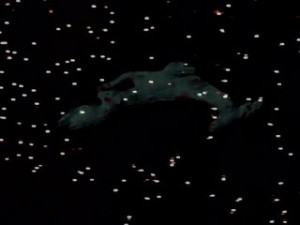 These advances are coinciding with an interest in “cloaked UFOs,” and it might be worth asking if there could be a connection between cloaking and the famed mysteries of UFO propulsion. So here’s another in my series of what might be called “unthinking antigravity”—attempts to escape the usual conceptual boxes of ufology: What if cloaking is not just a defensive camouflage mechanism but is actually an intrinsic part of how UFOs (and someday, our own space-and-time vessels) get around?
These advances are coinciding with an interest in “cloaked UFOs,” and it might be worth asking if there could be a connection between cloaking and the famed mysteries of UFO propulsion. So here’s another in my series of what might be called “unthinking antigravity”—attempts to escape the usual conceptual boxes of ufology: What if cloaking is not just a defensive camouflage mechanism but is actually an intrinsic part of how UFOs (and someday, our own space-and-time vessels) get around?
Douglas Adams’ “Heart of Gold” (from The Hitchhiker’s Guide to the Galaxy) provides a possible clue to the quantum mechanical reasons why an advanced hyperdrive might actually be tantamount to a cloaking device.
“…the most brain-wrenching device ever conceived”
The Heart of Gold is powered, Adams writes, by improbability itself:
The Infinite Improbability Drive is a wonderful new method of crossing interstellar distances in a few seconds; without all that tedious mucking about in hyperspace. As the Improbability Drive reaches infinite improbability, it passes through every conceivable point in every conceivable universe almost simultaneously. In other words, you’re never sure where you’ll end up or even what species you’ll be when you get there. It’s therefore important to dress accordingly.
The question becomes: How do you reach such a state of improbability? Obviously, the same way Schrödinger’s cat does: by hiding in a box. Adams never reveals the brain-wrenching secret hidden at the heart of the Heart of Gold, but it must be a cloaking device.
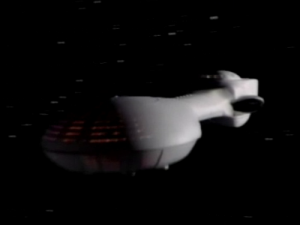 According to the “Copenhagen Interpretation” of quantum mechanics (or at least some interpretations of the Interpretation), the collapse of a particle’s wave (probability) function requires that there be an observer to measure (localize) it. In plainer terms: A state of affairs needs to be seen by someone in order to become real or actual. As long as waves/particles (or by extension, all the particles making up a starship) can’t be seen and measured, they theoretically remain in an indeterminate state, all possibilities (and all possible locations in spacetime) at once.
According to the “Copenhagen Interpretation” of quantum mechanics (or at least some interpretations of the Interpretation), the collapse of a particle’s wave (probability) function requires that there be an observer to measure (localize) it. In plainer terms: A state of affairs needs to be seen by someone in order to become real or actual. As long as waves/particles (or by extension, all the particles making up a starship) can’t be seen and measured, they theoretically remain in an indeterminate state, all possibilities (and all possible locations in spacetime) at once.
What if UFOs somehow expand their “spacetime potentiality” by shielding themselves from observation and measurement, using a powerful cloaking device, effectively turning themselves into Schrödinger’s cat?
This idea occurred to me in a completely unrelated context, psychic healing. In his excellent book Limitless Mind, former SRI remote-viewing researcher and laser physicist Russell Targ hypothesizes that psychic healing may have greater effectiveness prior to a firm diagnosis. For instance, taking a picture of a cancer using an MRI might “lock in” a state of affairs in the body that had previously remained in the more psychically tractable realm of uncertainty. The diagnosis essentially “collapses its wave function” and adds to the disease’s resistance to psychic or non science-based therapies.
That sensation you just experienced was the telepathic awareness of a million materialist physicians crying out in shock and rage at the implications of Targ’s suggestion. I’m not sure what I think of this idea when it comes to approaching health and illness, but the notion seems like it could make good sense of UFO locomotion: A fully cloaked vessel could exist temporarily as a vast wave function in some nonlocal, indeterminate, probabilistic (or possibilistic) state of uncertainty from which it is therefore possible to reemerge anywhere, anywhen, and in any form—just like Zaphod Beeblebrox’s mindbogglingly beautiful spaceship.
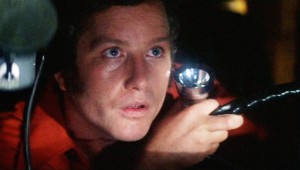 There’s an important entailment of this hypothesis that could make sense of some peculiarities of the UFO phenomenon: While a vessel in transit would temporarily exist as an unmeasured and unmeasurable fan of possibilities, it would actually require an external observer to be able to materialize (or become actual) at its destination. In other words, the observer/witness could be an intrinsic part of UFO travel, not an accident.
There’s an important entailment of this hypothesis that could make sense of some peculiarities of the UFO phenomenon: While a vessel in transit would temporarily exist as an unmeasured and unmeasurable fan of possibilities, it would actually require an external observer to be able to materialize (or become actual) at its destination. In other words, the observer/witness could be an intrinsic part of UFO travel, not an accident.
Could this be why so many UFO sightings seem to be almost staged? Could this account for all the bright lights? Might a witness or bystander actually be essential for a UFO to “land” in our reality?
Uncertainty: UFO and ESP Fuel
Famously, the head of Lockheed’s Skunk Works is reported to have hinted that UFO propulsion is based on ESP principles. Nonlocality (the interconnection of everything) has been the assumed interpretation of that statement, but according to the hypothesis I’m suggesting, it might really be uncertainty—since uncertainty is the state a shy cat or fully cloaked starship would be in quantum-mechanically. (With all due respect to Adams, we’d probably need to rename his invention an “infinite uncertainty drive.”)
 Uncertainty happens also to be intrinsic to psychic phenomena, and it is a constant frustration for those who would seek to pin these phenomena down and study them scientifically. Uri Geller was a prime example of this. As Jonathan Margolis shows in his excellent biography
Uncertainty happens also to be intrinsic to psychic phenomena, and it is a constant frustration for those who would seek to pin these phenomena down and study them scientifically. Uri Geller was a prime example of this. As Jonathan Margolis shows in his excellent biography, Geller perpetually convinced people, including most of the scientists who ever actually worked with him, that there was a genuine core to his abilities; yet he perpetually frustrated these professionals by being so committed to what they saw as shallow showmanship—and often his most amazing feats proved recalcitrant to actual recording or measurement. His signature trick of spoon-bending, for instance, was never filmed when he wasn’t touching the spoon, even though witnesses consistently reported the latter feat when cameras weren’t running.
To be fair, Geller himself was always a bit uncomfortable claiming those powers as his own; they seemed to happen around and through him, and there was always something “tricksterish” about it. Either Geller himself instinctively knew, or the powers working through him knew, that measurement was the enemy. I’m persuaded his “powers” were not a fraud, as James Randi has made his career claiming, but they did only function within an atmosphere of unpredictability and uncertainty—or they even fed on it—and Geller was not above using standard stage-magic legerdemain to help preserve that (a common phenomenon known as “mixed mediumship”).
According to Margolis, Geller has actually always been drawn to those who doubt him, and this is true of other magic men throughout history: They have always functioned and even thrived within an aura of uncertainty, and often even entered into their profession via determined skepticism. Many shamans, for example, begin their careers as debunkers; they then learn not only the “tricks” of the trade, but also the genuine paranormal power cloaked and even protected by that trickery. Because uncertainty is intrinsic to the shaman’s power, there will always be James Randis throwing skeptical stones. The Gellers need the Randis as much as the Randis need the Gellers. It’s the Trickster logic of anything that draws from uncertainty’s well.
Including the Unknower in the Unknown
But the poetic cliche that science kills the world of magic is also precisely right: Science may be an encroachment on this other “quantum” form of prediction and control, and while interdependent in one sense, they are also inherently incompatible. I say “forms of prediction and control” and not “ways of knowing” because shamanic magic (to put a label on it) is really a path that depends upon strategic unknowing.
 Suggestive clues are many here, and include the well-known power of nonconceptual and wordless thinking advocated by mystics and meditators, the hermetic value placed on silence and secrecy, and the observation by modern shamans (e.g., remote viewers) that “things that have been hidden shine like beacons in psychic space,” as star SRI psychic Pat Price put it. What is lost in the inability to know a thing with certainty is a gain when it comes to visualizing a thing in the fuzzy realm of the uncertain-but-probable.
Suggestive clues are many here, and include the well-known power of nonconceptual and wordless thinking advocated by mystics and meditators, the hermetic value placed on silence and secrecy, and the observation by modern shamans (e.g., remote viewers) that “things that have been hidden shine like beacons in psychic space,” as star SRI psychic Pat Price put it. What is lost in the inability to know a thing with certainty is a gain when it comes to visualizing a thing in the fuzzy realm of the uncertain-but-probable.
The reverse ought also to be true. If I were Russell Targ and Hal Puthoff in the 1970s at SRI, I would like to have performed the following experiment: Ask Price or Ingo Swann to remote view the fate of photons in a double-slit experiment. My hypothesis: They would not see the outcome (i.e., the famed collapse of the wave function), but instead would see a gray indeterminacy or a multistable flicker of possibilities, like a visual duck/rabbit … because clairvoyance is not the kind of observation uncertain waves/particles are looking for in order to land in the actual. (That’s just a hunch.)
In any case, if we were to formulate a theoretical principle here, it would be something like this: That “the paranormal” encompasses phenomena that for one reason or another, intentionally or accidentally, are recalcitrant to measurement/observation, and this observation-resistance either gives them their power or is involved in their power, on the model of quantum decoherence and the collapse of the wave function.
Whether or not there are really such things as “cloaked UFOs” isn’t really the point: They are a useful imaginary tool for probing the boundaries of thought, and the meaning of occult. That vexingly polyvalent term, which simply means “hidden,” is on one hand just a bookstore label that unifies diverse uncertain and tricksterish topics under its uneasy umbrella. With all those topics, there’s an ambiguity as to whether the thing is being hidden from view because it would be persecuted otherwise (e.g., witchcraft), whether it is overlooked because no one takes it seriously (e.g., UFOs and ESP), or whether it has to be concealed in order to function.
In European alchemy, for instance, there has always been a suggestion that the cloaking of secrecy was somehow intrinsic to its power; for the great 20th-century adept Fulcanelli, the massive subterranean foundations of French cathedrals and the black Madonnas often found down in those crypts symbolized the dependence of the Great Work on obscurity: “Real, but occult, power, which is exercised in secret, develops in the darkness, toils without respite in the deep foundations of the work.”
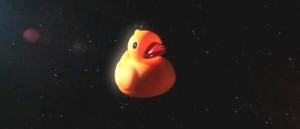
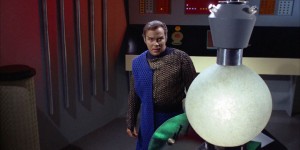





Mr. Wargo,
Re: “The Real Infinite Improbability Drive”, another wonderful article. I was talking with one of the old gov’t RVers the other day about how to hide things from RVers. This whole notion of “hidden” keeps popping up, and your post gave me some more good places to look for answers. Thanks again.